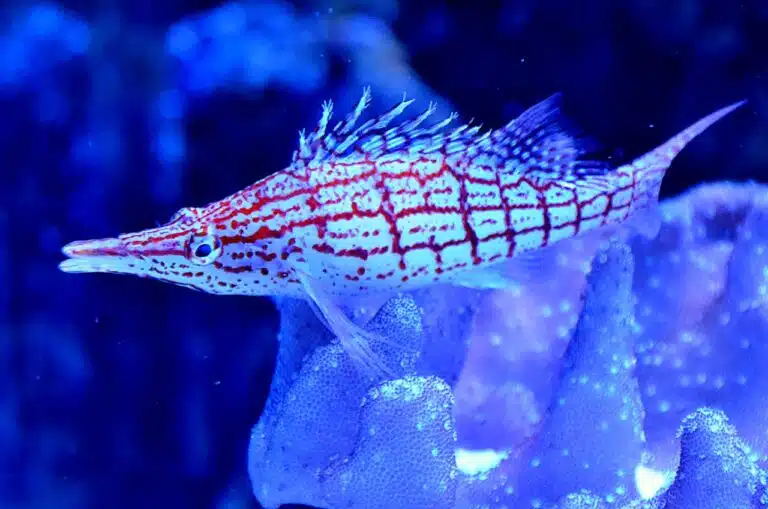There’s a common perception that saltwater tanks are difficult to maintain. Is this true? The short answer is NO! Saltwater tanks can be a mesmerizing addition to any home, offering a slice of the ocean right in your living room.
Let’s dive into the intricacies of saltwater tanks and explore the maintenance requirements.
The Allure of Saltwater Tanks
Imagine the vibrant colors of coral reefs, the graceful movement of exotic fish, and the soothing effect of watching an underwater ecosystem flourish. Saltwater tanks bring a piece of the marine world into your home, offering endless fascination and beauty. But the question remains: Are saltwater tanks hard to maintain?
Understanding Saltwater Tanks
Saltwater aquariums have evolved significantly over the years. In the past, they were seen as mysterious and challenging, but advancements in equipment and a better understanding of marine life have changed that. Today, many freshwater hobbyists and complete novices are venturing into saltwater aquariums.
The Basics of Saltwater Tanks
Saltwater tanks mimic the ocean environment, requiring a mix of saltwater, specific lighting, and carefully chosen inhabitants to thrive. While they can be more expensive than freshwater tanks, starting with a basic fish-only setup can make the transition easier.
Types of Saltwater Tanks:
1. Fish-Only Tanks: Focus solely on fish, making them simpler to manage.
2. Fish-Only with Live Rock (FOWLR): Include fish and live rock, which helps in biological filtration.
3. Reef Tanks: The most complex, containing fish, live rock, and corals, requiring precise water parameters and lighting.
The Initial Setup: A Critical Step
Setting up a saltwater tank requires careful planning and investment. The initial setup of a saltwater aquarium is crucial for long-term success.
Choosing the Right Equipment:
1. Tank Size: Larger tanks are more stable but require more space and higher costs.
2. Filtration System: Essential for maintaining water quality. Options include protein skimmers, canister filters, and sump systems.
3. Lighting: Necessary for coral growth and overall tank health. LED lights are a popular choice.
4. Heaters and Thermometers: Maintain a consistent temperature, typically between 75-80°F.
5. Powerheads: Create water movement, mimicking ocean currents.
Start your fishkeeping journey with the best equipment and the largest aquarium you can afford. While nano tanks are cheaper and take up less space, bigger aquariums are more stable and forgiving of beginner mistakes. Investing in good-quality equipment ensures longevity and better performance.
Preparing the Saltwater:
Mixing saltwater correctly is vital. Use a high-quality marine salt mix and a refractometer to ensure the right salinity level (1.023-1.025 specific gravity).
Cycling the Tank: The Nitrogen Cycle:
Before adding any fish or corals, your tank must undergo the nitrogen cycle. This process can take several weeks but is crucial for establishing beneficial bacteria that break down waste.
Monitoring Water Parameters:
1. Ammonia: Should spike initially, then drop to zero.
2. Nitrites: Rise after ammonia, then fall to zero.
3. Nitrates: Increase as nitrites decrease and are kept low through water changes.
Adding Live Rock:
Live rock aids in biological filtration and provides habitat for marine life. Introduce it during the cycling process to help establish beneficial bacteria.
Regular Maintenance: Keeping Your Tank Healthy
Weekly Tasks:
1. Water Testing: Regularly check parameters like pH, ammonia, nitrites, nitrates, and salinity.
2. Water Changes: Replace 10-20% of the water weekly to maintain water quality.
3. Cleaning: Remove algae from the glass and clean the equipment as needed.
Monthly Tasks:
1. Filter Maintenance: Replace or clean your filter media.
2. Check Equipment: Ensure heaters, lights, and pumps are functioning correctly.
3. Inspect Livestock: Look for signs of disease or stress in fish and corals.
Potential Challenges and How to Overcome Them
Common Problems:
1. Algae Overgrowth: Caused by excess nutrients or light. Control feeding, lighting, and use algae-eating creatures.
2. Disease: Quarantine new arrivals and treat affected fish promptly.
3. Water Quality Issues: Regular testing and water changes are crucial to prevent imbalances.
Expert Tips:
1. Research: Thoroughly research each species before adding them to your tank.
2. Join a Community: Engage with online forums and local clubs for advice and support.
3. Invest in Quality Equipment: Reliable equipment can save time and money in the long run.
Myths About Saltwater Tanks:
Contrary to popular belief, tank size does not limit fish growth. Fish will grow to their natural size regardless of tank size, which is why proper planning is essential. Another myth is that one must have experience with freshwater tanks before attempting saltwater. With proper research and patience, anyone can successfully maintain a saltwater tank.
Conclusion: Is It Worth It?
Are Saltwater Tanks Hard to Maintain? Maintaining a saltwater tank requires time, effort, and dedication. However, the rewards are immense. The vibrant colors, diverse marine life, and the sense of accomplishment make it all worthwhile. With proper research and commitment, anyone can successfully maintain a saltwater tank and enjoy the beauty of the ocean at home.
Saltwater tanks may seem daunting at first, but with the right approach and resources, they can be a manageable and incredibly rewarding hobby. Dive into the world of saltwater aquariums and experience the magic of marine life right in your home.
